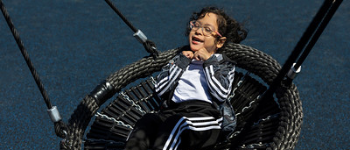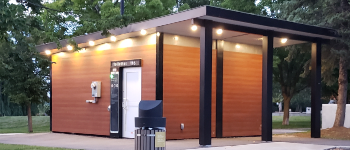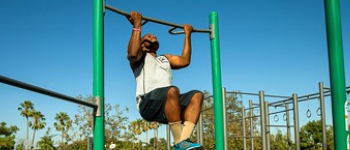Building a playground in your community can be an exciting project that brings joy to children and families. A playground allows children to engage in physical activity, play, and socialize with peers. In order to create the best playground experience for children, it's crucial to understand the different types and names of playground equipment.
Types of Playground Equipment
Playground equipment can be divided into several categories: traditional, modern, and inclusive. Traditional equipment often includes swings, slides, and climbing structures, while modern equipment may include sensory panels and interactive play systems. Inclusive playground equipment is designed to meet the needs of children with disabilities and includes accessible swings, ramps, and sensory play equipment.
Traditional Playground Equipment Names
Traditional playground equipment has existed for many years and is still popular today. Here are some of the most common traditional playground equipment names:
- Merry-Go-Round: This circular platform rotates and is often made of metal or plastic. Kids can sit or stand on the merry-go-round as it spins.
- Teeter-Totter: Also known as a see-saw, this equipment consists of a board that's balanced on a pivot. Children can sit on opposite ends of the board and take turns moving up and down.
- Monkey Bars: This is a set of bars that are suspended above the ground. Children can climb from bar to bar, developing their upper body strength in the process.
- Swings: Swings come in various styles, including bucket swings, belt swings, and tire swings. They can be made of plastic, metal, or rope and are designed to provide children with a fun and safe way to swing back and forth.
- Slides: Slides can be made of plastic, metal, or other materials and come in a variety of shapes and sizes. They can be straight, curved, or spiral and provide children with a fun and fast way to get from the top of the playground to the bottom.
- Spring Riders: This equipment consists of a seat mounted on a spring. Children can bounce up and down, developing their balance and coordination.
- Still Rings: These are rings that are suspended above the ground. They can be used to swing or for kids to practice their grip and upper body strength.
- Post and Platform Structures: This type of equipment typically consists of one or more elevated platforms, or decks, connected by various types of bridges, ladders, and climbing structures. Generally designed for children ages 5 to 12, these structures offer opportunities for physical activity, exploration, and social interaction.
These are just a few of the many traditional playground equipment options available. Each option offers a unique experience, providing kids with a fun way to play, move and explore.
Modern and Inclusive Playground Equipment Names
Recently, there has been a shift towards more modern, interactive, and inclusive playground equipment. Here are some of the most popular modern playground equipment names:
- Playground Climbers: This equipment can include rock walls, ropes courses, and other challenging climbing structures. It helps children develop their coordination, balance, and strength.
- Spring Riders: This equipment consists of a seat mounted on a spring. Children can bounce up and down, developing their balance and coordination.
- Spinners: This equipment includes spinning disks, barrels, and other structures that allow children to turn and rotate. Like spring riders, spinners help with balance and coordination. An example of an inclusive spinner would be the Sensory Spinning Seat.
- Sensory Panels: These panels have different textures, shapes, or objects for children to touch and explore. They are designed to stimulate the senses and promote sensory development.
- Nordic Wood Play Structures: Wood playground structures are growing in popularity due to their natural, modern, and eco-friendly use of materials and design. This equipment can be more varied and fun for children, encouraging physical development.
- Electronic and Interactive Equipment: This type of equipment bridges the gap between the digital and real worlds. Playing with this electronic, interactive equipment is rewarding because children engage with digital games while being active and social.
These modern designs offer a more interactive and engaging experience, with an emphasis on physical activity and sensory play.
Other Important Things About Playgrounds to Know
Aside from the types of playground equipment, there are also several other essential things to consider when building a playground. Safety is the top priority, and it's important to ensure that the equipment and surface material meet safety standards set by organizations like the Consumer Product Safety Commission (CPSC) and the International Play Equipment Manufacturers Association (IPEMA). You should also be aware of adding site amenities, like benches and shading surfaces, so parents and caregivers can supervise their children and children can take breaks when needed.
Additionally, it's essential to consider the size and location of the playground, as well as the maintenance and upkeep of the equipment over time. Regular maintenance and inspections should also be performed to ensure the equipment is in good working condition! By understanding the different types and names of playground equipment and other vital playground components, you can make informed decisions about what kind of play area is right for your community.
Reach out if you want to learn more about anything we've discussed!







